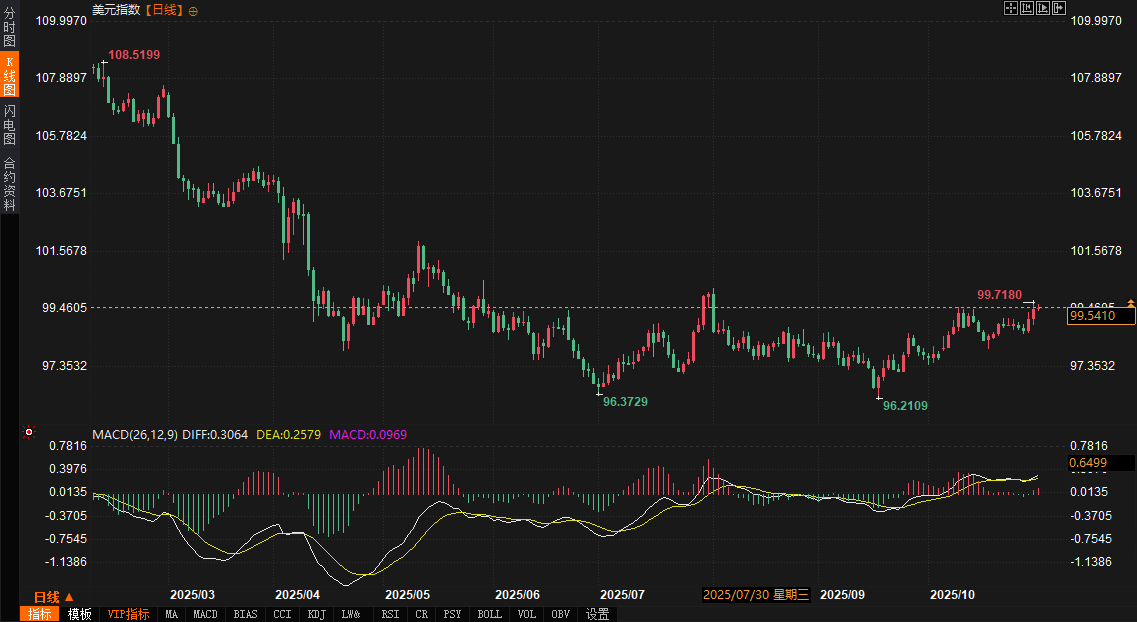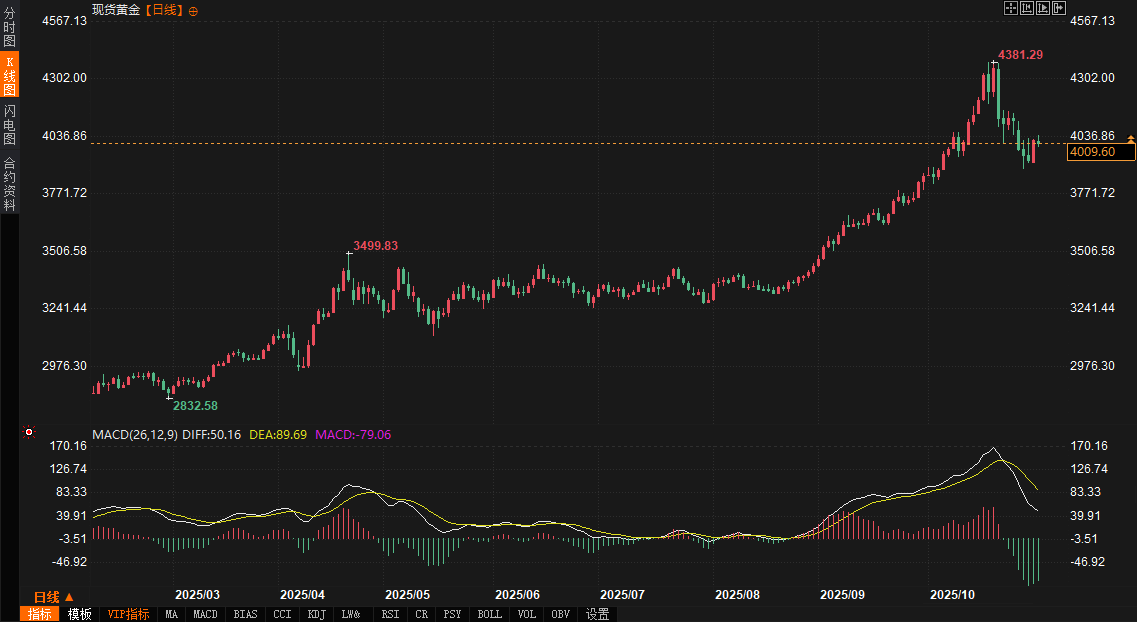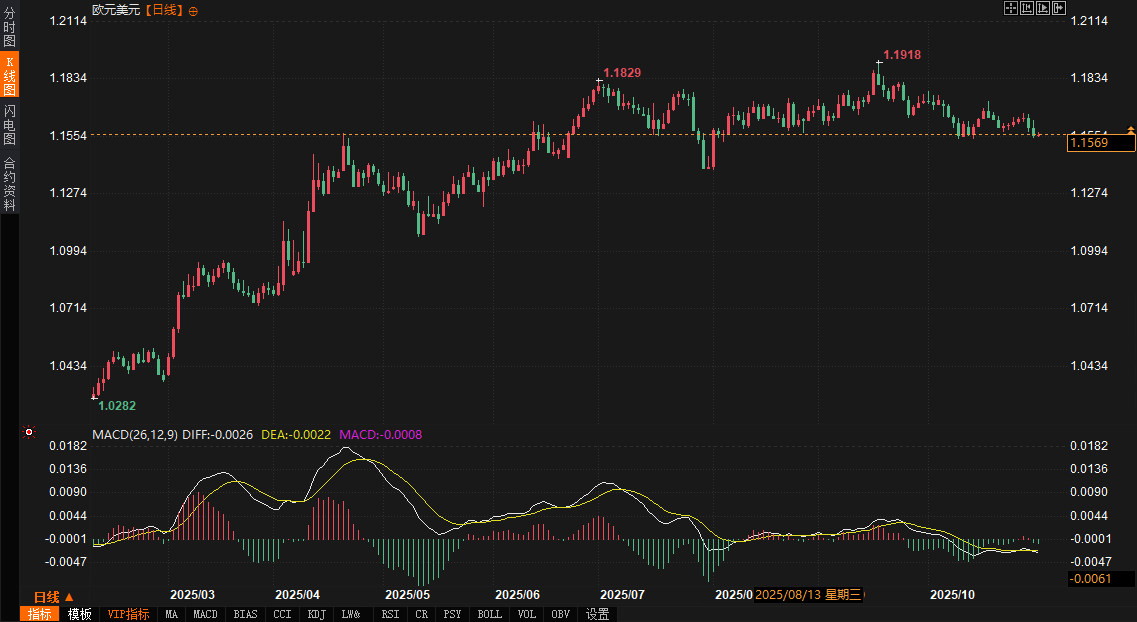The market landscape has shifted: bond yields have pulled a fast one, the dollar is on the defensive, and gold and the euro are facing a pullback.
2025-10-31 18:48:21
The decline in bond yields has not only affected monetary policy expectations but also triggered a chain reaction across asset markets: the US dollar has weakened under pressure, gold is consolidating, and the euro is quietly building a foundation for a rebound. Behind the seemingly calm prices, an asset repricing led by the bond market is underway.

Lower yields weigh on the dollar's performance.
UK government bonds led the bond market this month, with yields falling sharply, reflecting the market's pricing in both slowing inflation and weak employment. Weaker-than-expected UK CPI, coupled with signals of tax increases and budget easing from fiscal policy, created a "perfect combination" for the bond market rebound. Supply pressures also eased simultaneously—the Bank of England's reduction of its long-term bond sales cycle further supported the bond market's performance.
The impact extended to the US dollar, with US Treasury yields falling for the third consecutive month. Although Federal Reserve Chairman Powell attempted to downplay expectations of a December rate cut, leading to a late-day rebound in US Treasury yields, the overall downward trend in yields has begun to take shape. Historical data shows that when the monthly decline in yields on major global government bonds approaches 30 basis points, the US dollar index often follows suit with a 1.2%–1.5% pullback, as funds shift from dollar assets to non-US bonds.

While the US dollar index is currently holding steady at 99.5369, it is showing signs of weakness. If bond yields remain low, the probability of the dollar breaking below the 99 level is over 60%, which would open up upside potential for gold and the euro.
Gold: Short-term pressure does not change medium-term bullish trend
Spot gold fell 0.32% to $4,012 on the day, superficially constrained by a stabilizing dollar, but the underlying logic is being restructured as the bond market shifts. In the early stages of declining yields, bonds become more attractive, potentially diverting some funds from gold. Historical backtesting shows that when the bond market rises by 5% per month, gold prices lag by an average of 0.8%.
However, from a medium- to long-term perspective, lower bond yields will weaken the dollar, thereby boosting gold. Slowing inflation and a weak labor market in the UK and the Eurozone are driving funds into safe-haven bonds, as evidenced by strong demand at Japanese two-year government bond auctions. Despite the persistent high debt problem, the bond market recovery has significantly amplified the dollar's vulnerability.
Once the US dollar index falls back to the 98.5-99 range, gold will have a realistic basis to test the $4050 resistance level. The current low volatility in gold prices is not a sign of weakness, but rather a sign of a consolidation phase. As the bond market establishes a turning point, gold's value as a non-interest-bearing asset will be highlighted again.

Euro: Bond market momentum helps exchange rate breakout
The euro edged higher against the dollar, a seemingly flat move, but it actually harbors potential for a breakout. Significant declines in German and French bond yields have attracted funds back to the eurozone bond market, indirectly boosting the attractiveness of euro-denominated assets.
The logic behind the euro's strength is clear: declining European bond yields have weakened the relative advantage of the US dollar, driving the euro-dollar exchange rate higher. Although political uncertainty in France remains, the bond market recovery has effectively alleviated market concerns. If the US dollar weakens due to continued declines in US Treasury yields, the probability of the euro breaking through the 1.16 level will rise to 65%.
Similar to gold, the euro has also benefited from asset rotation resulting from the shift in the bond market. With the combined support of a weaker dollar and improved risk sentiment, the euro is expected to rise in tandem with gold.

Outlook: A period of stability in the bond market will determine asset allocation.
The "recovery" in the bond market in October was essentially a prelude to softening interest rate expectations. Its impact on asset prices is far from over: while the dollar appears stable, downward pressure is building; gold is finding support around $4,000 and is poised to resume its upward trend; the euro is on the verge of a breakout, awaiting a final push from a stabilizing bond market.
However, the risks have not dissipated—recurring expectations of a Fed rate cut, a late-day rebound in US Treasuries, and the upcoming budget challenges facing the UK and France could all destabilize the bond market. If yields can stabilize at current levels, a break below 99 for the dollar, a rise to 4050 for gold, and a break above 1.16 for the euro will become the main themes of the November market.
The bond market has shifted from a background variable to a key driver of asset pricing. The yield inflection point in October may mark the beginning of asset rotation in the fourth quarter.
- Risk Warning and Disclaimer
- The market involves risk, and trading may not be suitable for all investors. This article is for reference only and does not constitute personal investment advice, nor does it take into account certain users’ specific investment objectives, financial situation, or other needs. Any investment decisions made based on this information are at your own risk.





















